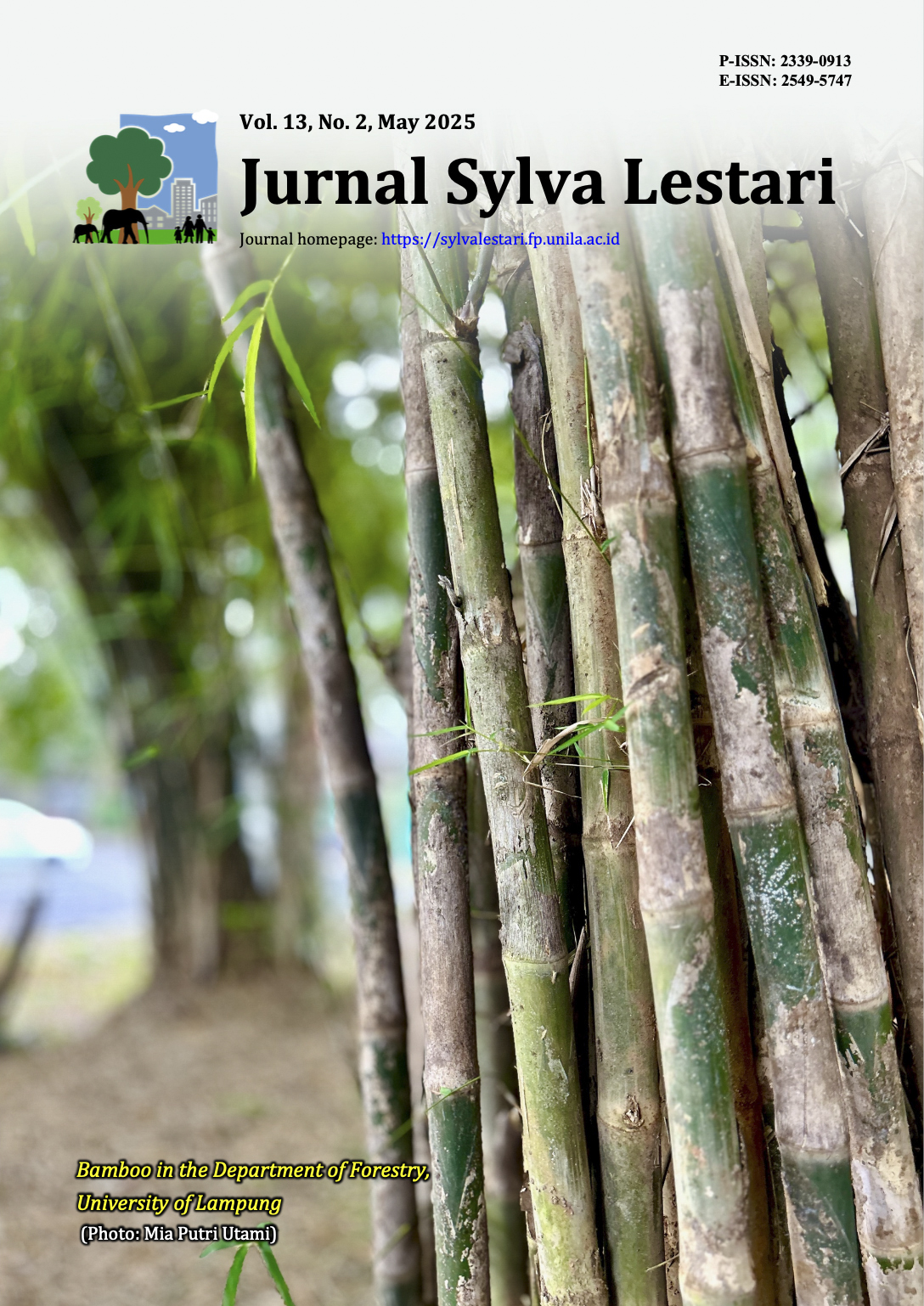Selecting a Suitable Synthesis of Industrial Hot Melt Nanostructured Polyurethane Adhesives for the Enhanced Bonding of MDF and PVC Veneers - A Review
DOI:
https://doi.org/10.23960/jsl.v13i2.1132Abstract
This review focuses on the synthesis and application of industrial hot-melt nanostructured polyurethane adhesives (HMPUAs) used for enhancing the bonding of medium-density fiberboard (MDF) with polyvinyl chloride (PVC) veneers. The use of PVC veneers has been identified as an effective approach to protect wood composite products, particularly MDF, due to its resistance to moisture, environmental conditions, and cost-effectiveness. However, achieving strong adhesion between PVC and MDF remains challenging due to differences in their chemical and structural properties. This study compares various synthesis methods of polyurethane adhesives, emphasizing the prepolymer method as the most efficient approach for producing high-performance HMPUAs. Key challenges include optimizing the isocyanate to hydroxyl group ratio (NCO/OH), selecting appropriate polyols, and incorporating suitable additives. The effects of nanoparticles, including nanosilica, nanolignin, phosphorus, nitrogen compounds, mica particles, and aluminum trihydrate, on the mechanical and thermal properties of polyurethane adhesives are thoroughly discussed. Furthermore, the challenges of achieving consistent adhesive performance, compatibility, and durability under varying environmental conditions are addressed. The findings of this review provide essential insights into improving the synthesis of one-component HMPUAs and enhancing their applicability in MDF-PVC veneer bonding.
Keywords: additives, hot melt adhesive, medium-density fiberboard, polyurethane, reactive resin
Downloads
Downloads
Published
How to Cite
Issue
Section
Statistics
 Abstract views: 400 times
Abstract views: 400 times PDF downloaded: 379 times
PDF downloaded: 379 times
Metrics
License
Copyright (c) 2025 Fatemeh Hassani Khorshidi, Ahmad Ramazani Saadatabadi, Antonio Pizzi, Widya Fatriasari

This work is licensed under a Creative Commons Attribution-NonCommercial 4.0 International License.
Authors retain copyright and grant the journal right of first publication with the work simultaneously licensed under a Creative Commons Attribution-NonCommercial 4.0 Licence that allows others to share the work with an acknowledgement of the work's authorship and initial publication in this journal.
Authors are able to enter into separate, additional contractual arrangements for the non-exclusive distribution of the journal's published version of the work (e.g., post it to an institutional repository or publish it in a book), with an acknowledgement of its initial publication in this journal.
Authors are permitted and encouraged to post their work online (e.g., in institutional repositories or on their website) prior to and during the submission process, as it can lead to productive exchanges, as well as earlier and greater citation of published work (See The Effect of Open Access).









